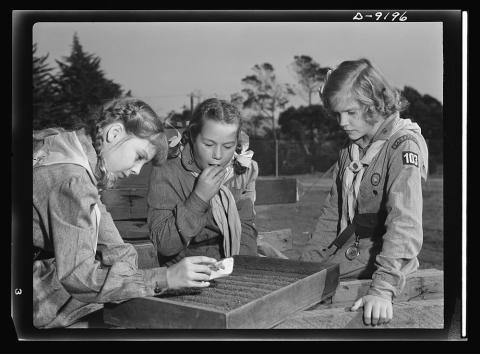
Description
Victory gardens have been a symbol of American support for the war effort and were vital to ensuring individuals at home had access to adequate food while rations were sent abroad. This was a practice used during World War I and was necessary to bring back in World War II. By 1942, 15 million families had planted Victory Gardens. This number grew to 20 million by 1944, producing 40 percent of the fresh fruits and vegetables consumed in the U.S. As seen in the image, this act of patriotism and need was encouraged not just for adults but for children, too. These three young girls, Pat Nelson, Doris Laclair and Barbara Redford, were Girl Scouts in San Francisco who were planting their own Victory Garden.
Source-Dependent Questions
- Why would it be important to show children involved in planting a Victory Garden?
- Why would an organization like Girl Scouts be used to promote the practice of producing Victory Gardens?
Citation Information
Rosener, Ann, "Victory Gardens--for family and country," between February and March 1943. Courtesy of Library of Congress